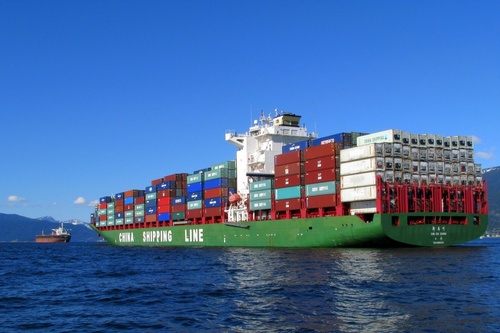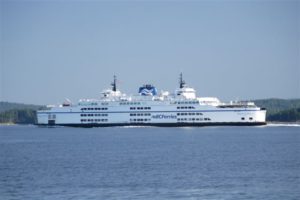 Anyone who spends time traveling around or gazing out on Georgia Strait will see ships here there and everywhere in the region. The anchored ships in English Bay, Vancouver are a world renowned spectacle for tourists, travelers and business visitors alike. Personally I love to see them and greatly appreciate how they bring many of the goods that my family and I need to this part of the world.
Anyone who spends time traveling around or gazing out on Georgia Strait will see ships here there and everywhere in the region. The anchored ships in English Bay, Vancouver are a world renowned spectacle for tourists, travelers and business visitors alike. Personally I love to see them and greatly appreciate how they bring many of the goods that my family and I need to this part of the world.
 In the Port of Metro Vancouver there are well over 3000 ships entering and exiting each year and that does not include BC Ferries. Nanaimo sees over 200 and Victoria the same once again not including all the ferry trips. While many of the ships look similar they perform a wide range of functions. From ferries to oil tankers, bulk carriers to container vessels, military vessels to large pleasure craft and cruise ships to break bulk. More information about ships in Georgia Strait is available on our main website.
In the Port of Metro Vancouver there are well over 3000 ships entering and exiting each year and that does not include BC Ferries. Nanaimo sees over 200 and Victoria the same once again not including all the ferry trips. While many of the ships look similar they perform a wide range of functions. From ferries to oil tankers, bulk carriers to container vessels, military vessels to large pleasure craft and cruise ships to break bulk. More information about ships in Georgia Strait is available on our main website.
 Excluding tankers, an average ship is over 2 football fields in length and carries over 1.5 million litres in fuel oil. Add in oil tanker traffic and that’s a lot of hydrocarbons floating around our waters. For the most part, the shipping industry is very conscientious and usually gets them in and out of here without incident. However there have been accidents and oil has been spilled here. Just like the increasing tanker traffic that has had so much media attention lately, the more other ships we have transiting our waters, the more risk we have of a hydrocarbon spill.
Excluding tankers, an average ship is over 2 football fields in length and carries over 1.5 million litres in fuel oil. Add in oil tanker traffic and that’s a lot of hydrocarbons floating around our waters. For the most part, the shipping industry is very conscientious and usually gets them in and out of here without incident. However there have been accidents and oil has been spilled here. Just like the increasing tanker traffic that has had so much media attention lately, the more other ships we have transiting our waters, the more risk we have of a hydrocarbon spill.
So in order to keep those risks at an acceptable level it behooves us as a society to ensure that those shipping trips are necessary and that the goods that are being shipped are needed. Ninety percent of world goods are transported by ships and unfortunately some of those goods are just satisfying consumer wants and/or perceived needs. I suspect that the production, transportation and use of some products could do more harm than good when you look at the bigger picture of world environmental and socioeconomic sustainability. Oil and coal might come immediately to mind but there are many other examples. What would it take to ensure all products shipped fit into a world view of sustainable development as outlined by the Bruntland Commission Report way back in 1987?
“Sustainable development is development that meets the needs of the present without compromising the ability of future generations to meet their own needs”. It contains two key concepts:
- the concept of “needs”, in particular the essential needs of the world’s poor, to which overriding priority should be given; and
- the idea of limitations imposed by the state of technology and social organization on the environment’s ability to meet present and future needs.”
Your respectful thoughts are welcome.
